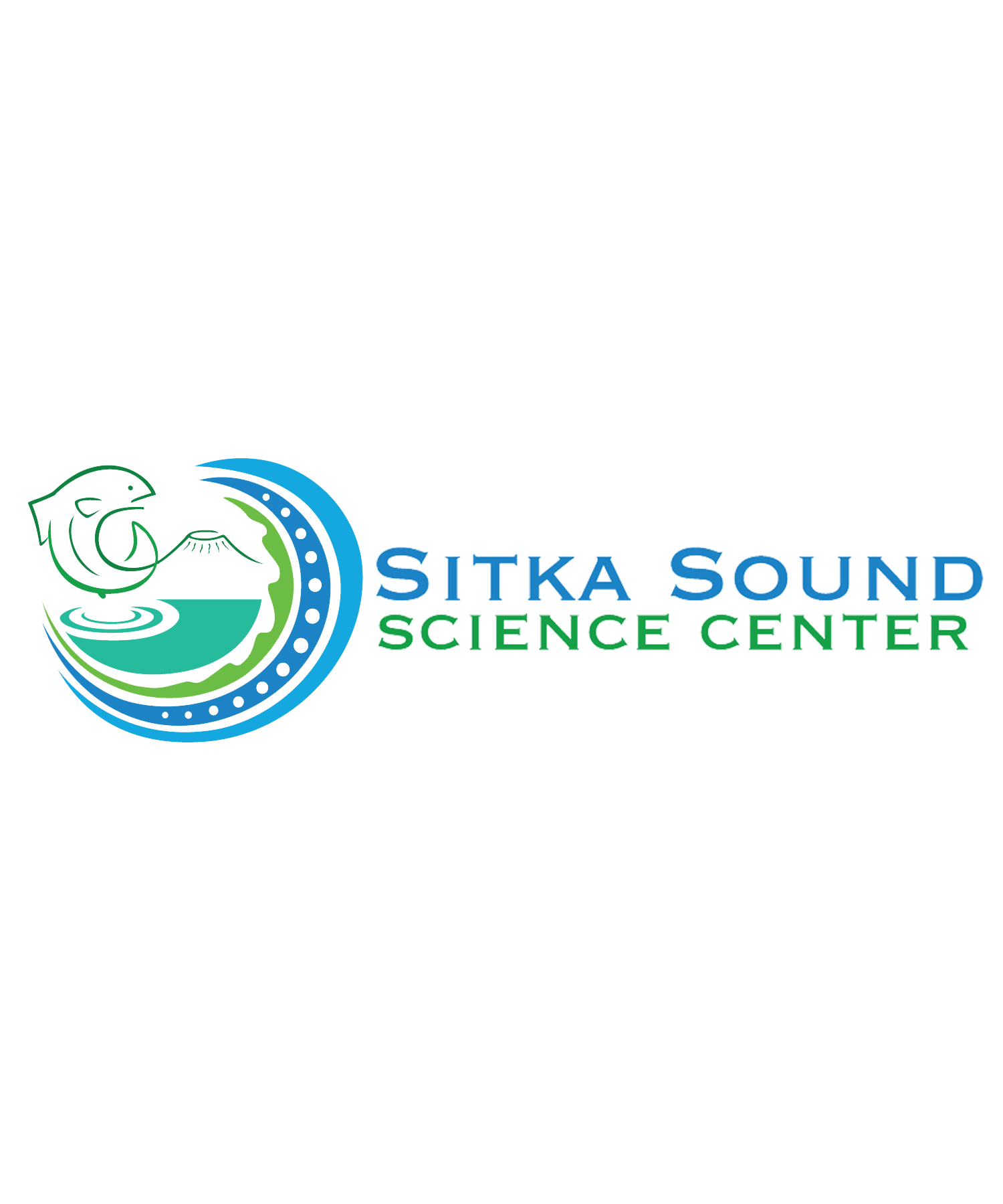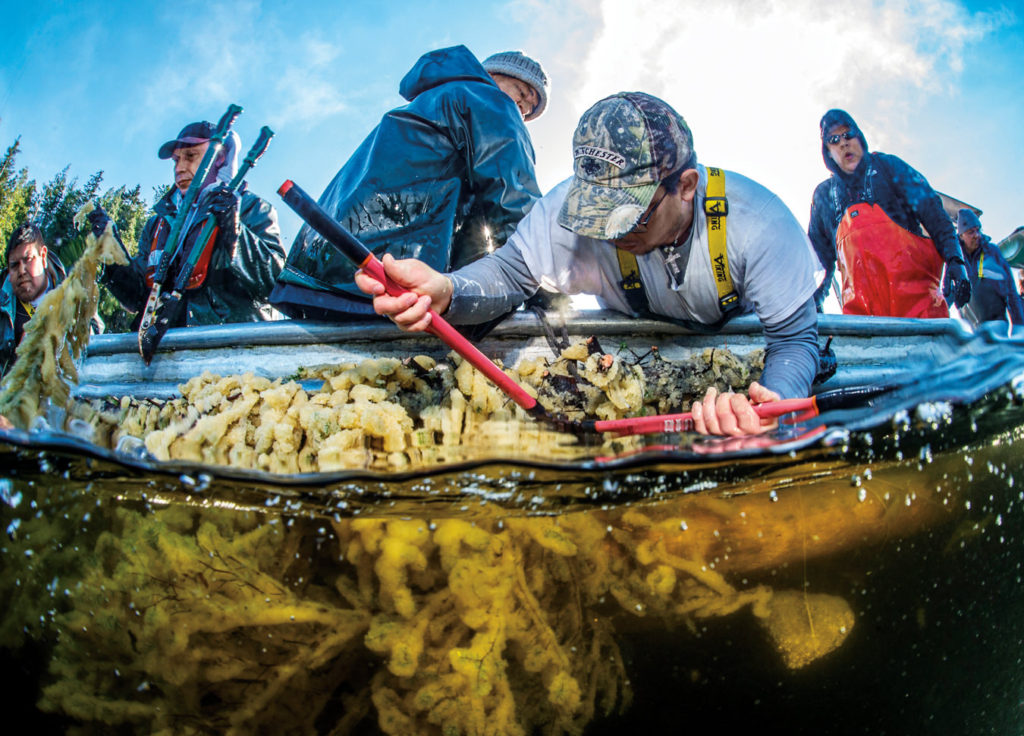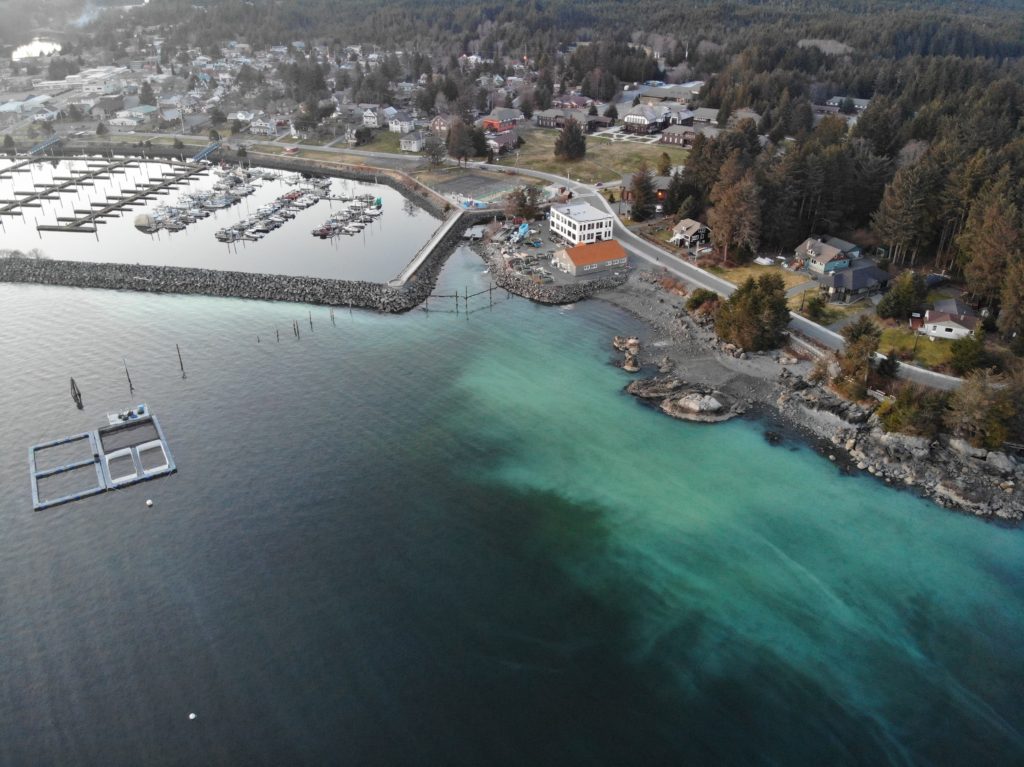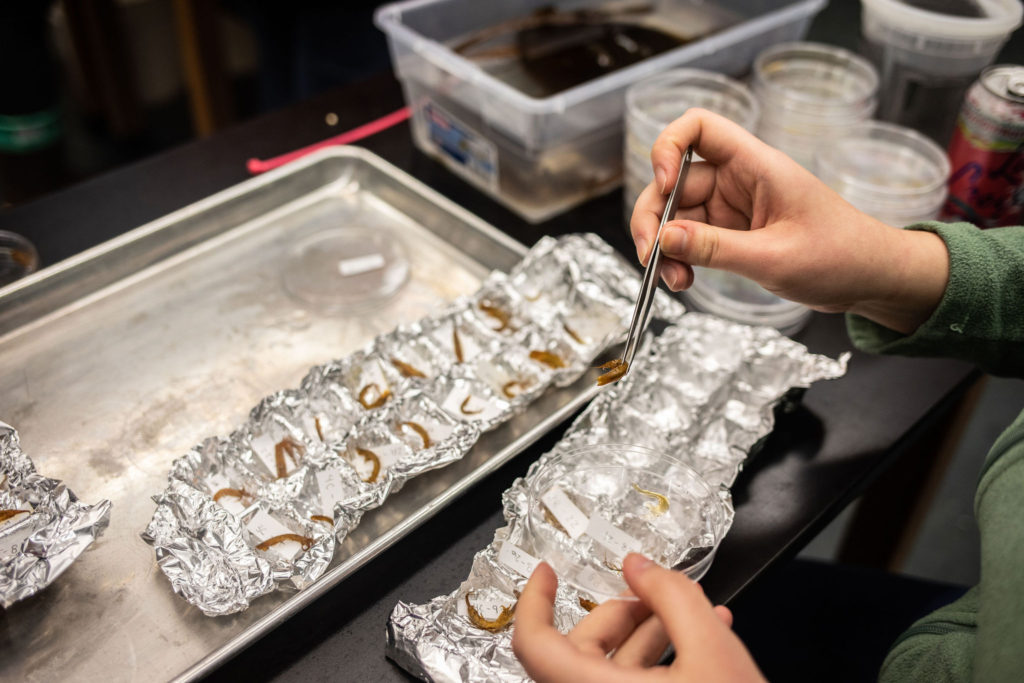
Research
Research
Research
Research Spotlight: Herring Pathology
COVID-19 reminds us that all populations are vulnerable to disease outbreaks, including herring. Scientists who study herring populations are monitoring for a fish virus here in Sitka Sound. An epidemic of this virus in Prince William Sound caused the herring population to crash in the 1990’s. They wonder how important viral epidemics are in controlling the size of herring populations, so they are monitoring populations in several locations. For the past two years, scientists from the Sitka Sound Science Center have aided in the sample collection.
Today and for thousands of years, Yaaw have sustained and enriched the lives of Tlingit people. Besides nourishing people, they play an important role in moving energy up the food web. There is tremendous interest in keeping our local populations of herring healthy.

The virus that caused the collapse of the Prince William Sound herring population in 1993 is Viral Hemorrhagic Septicemia or VHS. That event motivated fisheries researchers to track herring populations in Alaska for disease. U.S. Geological Survey scientists teamed up with the Alaska Department of Fish and Game to study VHSV (the virus that causes the disease) in Alaska. Though the natural occurrence of this virus is usually low, outbreaks can occur when herring are stressed. Stress could be due to the environmental conditions, being in a confined space, or a lack of food.
In 2020, the research team found zero prevalence of VHSV in the Sitka Sound herring sampled. This year we expect a strong herring return in Sitka. Meaning lots of spawners in our local population. Which is good thing because VHS epidemics can be devastating to all ages of herring. University of Washington scientists recently estimated that the Prince William Sound herring population decreased by 60% in 1993 when VHS was first observed. The population has not recovered from that event.

For thirteen years, scientists from the US Geological Survey (USGS) at the Marrowstone Marine Field Station have been monitoring the health of herring in Sitka. The group leads the effort on herring health surveillance and their efforts include monitoring other pathogens in addition to VHS. They want to understand how diseases affect herring populations. The team has developed an antibody test for VHSV, which is much like the antibody test used for COVID-19. Using blood samples, Marrowstone scientists can tell if herring have been exposed and are now immune to the virus. When a large percentage of the herring population is immune to the virus, infections can’t easily spread through the population. This is what is referred to as herd immunity. If there is little evidence for large scale immunity, then the population is at risk for an epidemic.
In 2020 antibody tests showed that 1.7% of the herring from Sitka had detectable amounts of antibodies against VHSV and there was no evidence of infection in the population. These observations are among the lowest observed since this work began in 2012. The 2020 data corresponded with a relatively large return of spawning fish in Sitka Sound. This supports the idea that a lack of exposure to the virus aided a large return of fish. However, it also means that 98% of the population has not been exposed to VHSV and is vulnerable. It is important to remember that if some members of the population become infected with VHSV it means there will be an epidemic, but the antibody test is a valuable tool for predicting potential disease impacts on wild herring populations.

The Science Center plans to collect the necessary tissues for this work to continue. As scientists from USGS are grounded due to COVID this year. If you want to learn more about this work check out the project’s webpage here. Until then, may your hemlock branches be heavy and your stomachs full.
